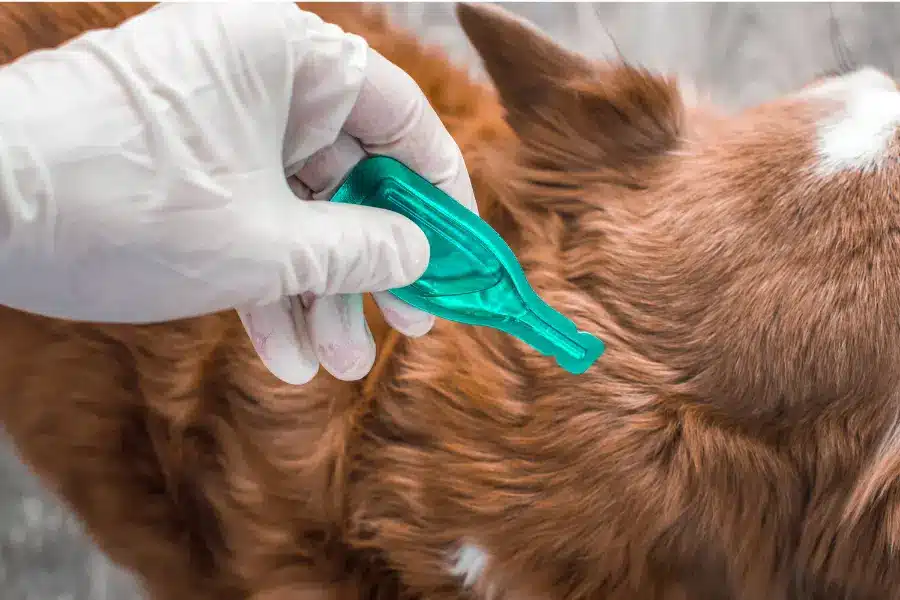Dealing with separation anxiety in dogs is a challenge many pet owners face. Separation anxiety is a distressing emotional disorder where dogs display excessive stress and behavior problems when left alone.
Such cases are not uncommon, with many dogs experiencing it to varying degrees. Early detection and prompt intervention can significantly enhance a dog’s quality of life and save you many headaches down the road.
Recognizing Separation Anxiety: Key Signs
Understanding the signs of separation anxiety is the first step to helping your furry friend. Let’s delve into the most common symptoms.
Excessive Barking
One significant sign of separation anxiety in dogs is persistent barking or howling. This behavior often starts shortly after you leave and can continue for long periods. Excessive noise may be triggered by a fear response to loneliness and can take a toll on your pet’s well-being over time.
Destructive Behavior
Have you come home to chewed furniture or torn pillows? This destructive behavior could be your pet’s way of expressing anxiety or trying to escape. It’s more than just a nuisance—it can cause physical harm to your pet.
House Soiling
House soiling is another clear sign. If your well-trained dog suddenly starts having accidents indoors when alone, it may indicate stress. This issue can affect not only your pet’s health but also your living environment.
Other Common Signs
Pacing and attempts to escape are two other signs that may signal anxiety. Dogs under stress may pace in a fixed pattern, while those feeling trapped may try to escape, risking self-injury in the process.
Alleviating Separation Anxiety with Calming Dog Beds
Separation anxiety can manifest in a variety of disruptive behaviors. However, one effective and non-invasive method to help manage this issue is through the use of calming dog beds. These specialized beds are designed with features meant to comfort and soothe anxious dogs, helping to create a personal safe haven for them
Calming dog beds are not just any ordinary pet beds. They have been specifically designed with features that can help alleviate feelings of anxiety and stress in dogs. First, their structure often includes raised rims or bolsters that can provide a sense of protection and security. This mimics the sensation of a protective cuddle, something that can significantly comfort an anxious dog.
Secondly, these beds often use super-soft materials that not only offer an extremely comfortable place for your dog to rest but also replicate the feeling of a mother’s fur. This can be especially soothing for dogs that get anxious when left alone.
Lastly, some calming beds also incorporate other soothing elements, like heat or calming scents, to provide an extra layer of comfort to your pet.
Benefits of Using Calming Dog Beds for Separation Anxiety
A calming dog bed serves as more than just a cozy spot for your dog to sleep. It can also play an essential role in managing their anxiety.
- Reducing Anxiety and Stress – They are designed specifically to provide comfort and security to dogs, which can significantly reduce feelings of anxiety and stress. They’re often made with soft, plush materials and raised edges that mimic the feeling of a mother’s protective fur, offering a safe haven for anxious dogs.
- Promoting Quality Sleep – A comfortable, calming dog bed encourages restful sleep, which is essential for a dog’s overall health and well-being. Better sleep can also contribute to lower anxiety levels in dogs, making them feel more relaxed and comfortable.
- Creating a Safe Space – When a dog associates a calming bed with feelings of safety and comfort, it becomes their safe space. This familiarity can be especially beneficial for dogs with separation anxiety, as they have a designated place where they feel secure when their owner is not around.
- Discouraging Destructive Behavior – Destructive behavior is often a sign of anxiety in dogs. With the use of a calming dog bed, a dog can have a positive and safe outlet for its anxiety, discouraging destructive behaviors such as chewing on furniture or shoes.
Selecting the Right Calming Dog Bed
Choosing the best calming dog beds involves considering your dog’s size, preferred sleeping style, and the bed’s material and design. Ensure the bed is large enough for your dog to stretch out comfortably but cozy enough to provide a secure feeling.
Opt for materials that are soft, warm, and soothing—like faux fur or plush fabric. The bed should also be durable and machine washable for easy cleaning. Choose designs with raised edges that can serve as a pillow and offer a sense of security. A non-slip bottom can also be useful, especially on slick floors.
Additional Strategies for Addressing Separation Anxiety
Besides using calming dog beds, there are other methods to manage separation anxiety.
- Gradual Desensitization Training – Gradual desensitization involves gradually getting your dog accustomed to being alone, starting with short periods and gradually increasing the time.
- The Role of Interactive Toys – Interactive toys can provide mental stimulation, helping to distract your pet from feelings of anxiety when you’re not around.
- The Importance of a Consistent Routine – A regular routine of feeding, playtime, and exercise can help your dog feel more secure. Consistency can reduce uncertainty, further helping to mitigate symptoms of anxiety.
Understanding and addressing separation anxiety in dogs is a multi-step process. It involves recognizing the signs, like excessive barking and destructive behavior, and responding appropriately. Calming dog beds can play a significant role in managing this disorder, offering a comforting space for your pet. Choosing the right bed requires careful consideration of various factors, such as size, material, and design.
Beyond the use of calming dog beds, other strategies, like gradual desensitization, interactive toys, and a consistent routine, can also be valuable tools in managing your pet’s anxiety. However, remember that every dog is unique, and what works for one might not work for another.
If your efforts to ease your dog’s anxiety are unsuccessful or if their behavior worsens, it’s essential to seek professional help. Veterinarians or pet behaviorists can provide further guidance and treatment options, ensuring your furry friend lives a happy, stress-free life. Remember, a calm dog is a happy dog, and a happy dog makes for a happy home.






